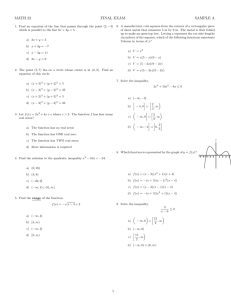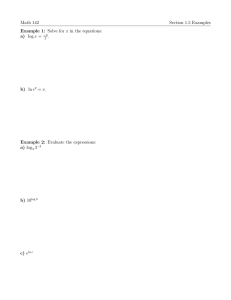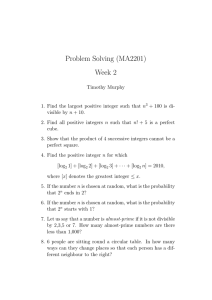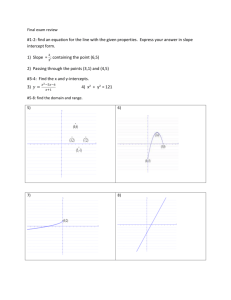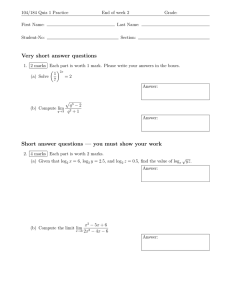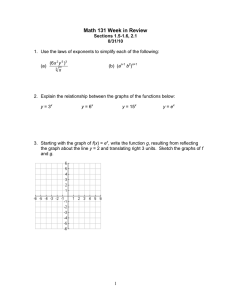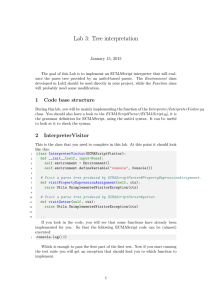1. (a) e = 4e
advertisement
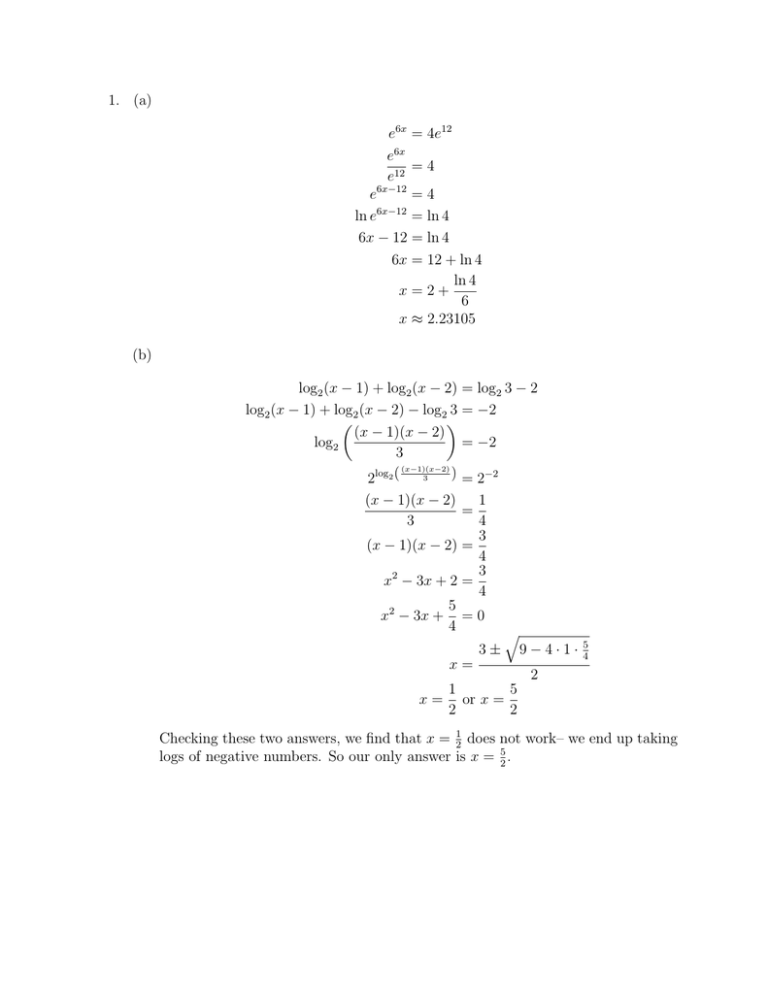
1. (a) e6x = 4e12 e6x =4 e12 e6x−12 = 4 ln e6x−12 = ln 4 6x − 12 = ln 4 6x = 12 + ln 4 ln 4 x=2+ 6 x ≈ 2.23105 (b) log2 (x − 1) + log2 (x − 2) = log2 3 − 2 log2 (x − 1) + log2 (x − 2) − log2 3 = −2 (x − 1)(x − 2) log2 = −2 3 (x−1)(x−2) ) = 2−2 3 2log2 ( (x − 1)(x − 2) 1 = 3 4 3 (x − 1)(x − 2) = 4 3 x2 − 3x + 2 = 4 5 x2 − 3x + = 0 4 q 3± 9−4·1· x= 5 4 2 1 5 x = or x = 2 2 Checking these two answers, we find that x = 12 does not work– we end up taking logs of negative numbers. So our only answer is x = 52 . 2. (a) At t = 0, there are 12 rabbits. At t = 3, the number has doubled, so there are 24 rabbits. (b) We will use the points (0,12) and (3,24) to solve for the constants a and k. 12 = aek·0 12 = a · 1 a = 12 Using the other point and this value for a: 24 = 12ek·3 2 = e3k ln 2 = ln e3k ln 2 = 3k ln 2 k= 3 k ≈ .23105 (c) 2000 = 12e.23105t 2000 = e.23105t 12 2000 ln = ln e.23105t 12 2000 = .23105t ln 12 ln 2000 12 t= .23105 t ≈ 22.23 So after 22.23 days, there will be 2000 rabbits. (d) y = 12e.23105·40 = 123, 859.935 So there will be 123,860 rabbits. Page 2 3. (a) Present value of an annuity due (b) APY of an account (c) Sinking fund (d) Periodic payment of an amortized loan (e) Simple interest (f) Future value of an ordinary annuity (g) Continuously compounded interest (h) Loan payoff amount (i) Present value of an ordinary annuity (j) Total interest paid (k) Future value of an annuity due (l) Periodically compounded interest (m) Present value of a deferred annuity Page 3



